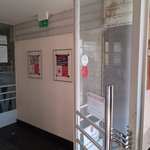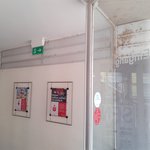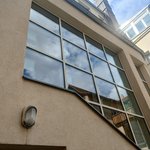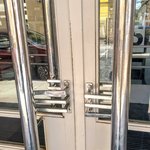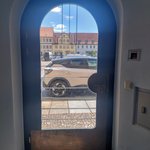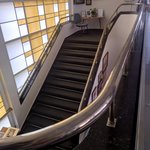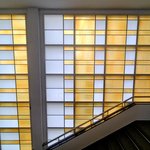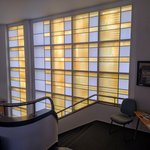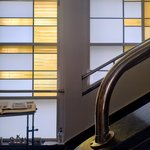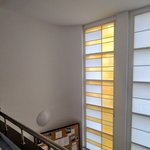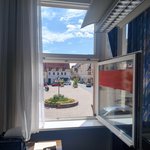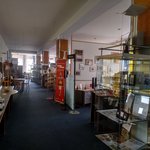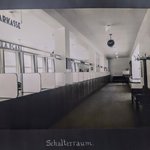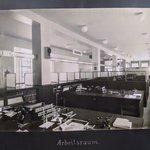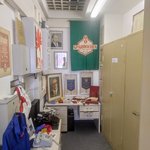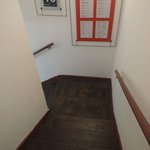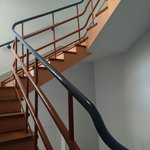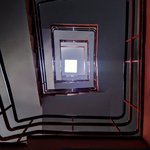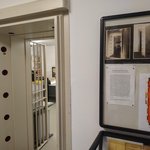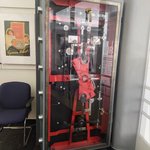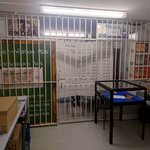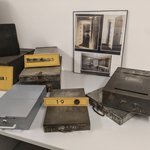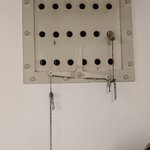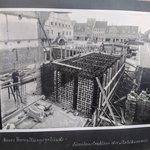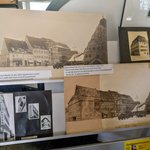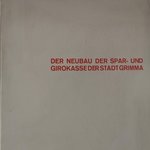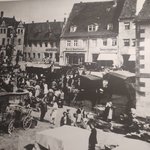Hugo Koch liked to use the red volcanic rock porphyry tuff, which is typical for the region. From the outside, the building appears rather traditional, it should adapt to the surroundings of the market square in Grimma. Elements of modernity only become more apparent at the main entrance. The door itself and to the right of it the small plastic made of porphyry tuff, which is a symbol of money.
The inside and interieurs were equipped according to the most modern construction methods and techniques. The former counter hall is situated on the first floor. The original staircase behind the entrance leads to the counter hall. that became the Sparkasse Museum The counter hall was integrated three metres above street level due to the regular flooding of the Mulde river. Customer traffic was therefore to be handled at this level. The vault and a booking room were located on the ground floor. .

